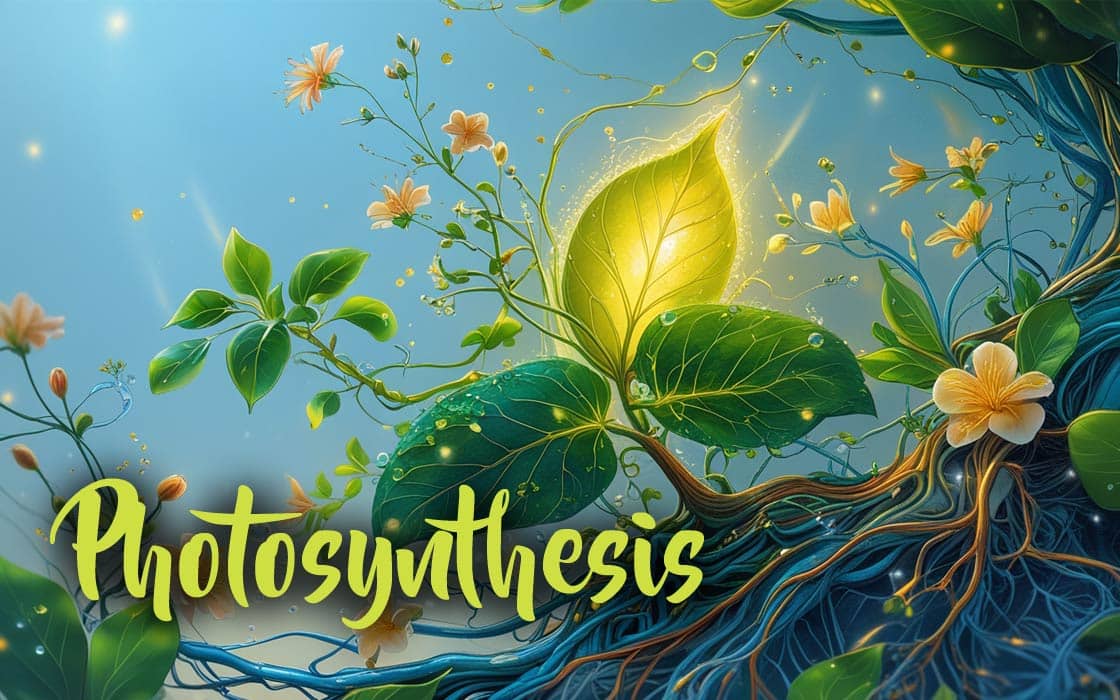Photosynthesis Powers OurWorld
Introduction
Photosynthesis is one of the fundamental natural processes that sustain life on Earth. It occurs in plants, algae, and certain bacteria, enabling them to convert sunlight into usable energy. This process supports plant growth and plays a vital role in oxygen production and carbon cycling. Though often unnoticed, photosynthesis is the driving force behind the balance of ecosystems, the food chain, and climate stability. Without it, life as we know it would not exist.
The Science Behind Photosynthesis
Definition and Basic Concept
Photosynthesis Powers is the biochemical process by which plants and other auto trophic organisms use light energy to convert carbon dioxide (CO₂) and water (H₂O) into glucose (C₆H₁₂O₆) and oxygen (O₂). This conversion occurs in chloroplasts, specialized organelles found in plant cells, where sunlight is absorbed and transformed into chemical energy.
The overall reaction of photosynthesis is represented as follows:
6CO₂ + 6H₂O + Light Energy → C₆H₁₂O₆ + 6O₂
This equation summarizes how plants capture and store solar energy, making it available for growth and development while releasing oxygen as a byproduct.
Sunlight serves as the primary energy source that initiates the process. Carbon dioxide, obtained from the atmosphere through microscopic openings called stomata, is used to form organic molecules. Water, absorbed by the roots, provides electrons and protons essential for the chemical reactions that generate glucose. These elements work together harmoniously to sustain life on Earth.
How Photosynthesis Powers Life
One of the most crucial byproducts of Photosynthesis Powers is oxygen. This process has maintained the Earth’s atmospheric oxygen levels for millions of years, making it possible for aerobic organisms, including humans, to survive. Marine algae alone contribute a significant percentage of the oxygen we breathe, highlighting the importance of photosynthesis beyond terrestrial plants.
The glucose produced through photosynthesis serves as the primary energy source for plants and fuels the entire food chain. Herbivores consume plants to derive energy, and carnivores feed on herbivores, ensuring the continuous transfer of energy throughout ecosystems. Without photosynthesis, food sources would vanish, disrupting the balance of life.
Photosynthesis enables plants to store solar energy in the form of glucose, which is later used for growth, reproduction, and repair. When organisms consume plants, this stored energy is transferred and utilized in various metabolic processes. This makes photosynthesis the foundation of all energy flow within biological systems.
Photosynthesis and the Environment
Photosynthesis Powers plays a vital role in maintaining atmospheric gas levels by absorbing carbon dioxide and releasing oxygen. By removing excess CO₂, plants help mitigate the greenhouse effect and prevent extreme temperature fluctuations, contributing to a stable and habitable environment.
Plants act as natural carbon sinks, absorbing carbon dioxide from the air and reducing the impact of human-induced carbon emissions. Forests, especially rain forests, are critical in reducing greenhouse gases and combating global warming. Deforestation disrupts this balance, leading to an increase in atmospheric CO₂ levels and accelerating climate change.
Through transpiration, plants release water vapor into the atmosphere, influencing humidity and precipitation patterns. Large-scale vegetation cover contributes to rainfall cycles and temperature regulation. The destruction of plant life disrupts these patterns, leading to adverse climate changes such as desertification and droughts.
Human Dependence on Photosynthesis
Photosynthesis Powers is the foundation of agriculture. All crops rely on this process to grow and yield fruits, vegetables, and grains essential for human and animal consumption. Even livestock, which humans depend on for meat, dairy, and other products, rely on plant-based food sources. Advancements in agricultural practices, including genetic engineering and improved photosynthesis efficiency, are being explored to enhance global food security.
Fossil fuels such as coal, oil, and natural gas are derived from ancient Photosynthesis Powers organisms. Over millions of years, plant material was buried and subjected to heat and pressure, transforming into energy-dense resources. While these fuels have powered human civilization, their excessive use has led to increased carbon emissions, highlighting the need for sustainable alternatives.
Scientists are working on artificial photosynthesis technologies that replicate nature’s ability to capture solar energy and produce clean fuels such as hydrogen. This breakthrough could revolutionize energy production, reducing our dependence on fossil fuels and curbing environmental pollution. If successfully developed, artificial Photosynthesis Powers could provide a renewable and sustainable source of energy for future generations.
Challenges and Threats to Photosynthesis
Large-scale deforestation for agriculture, urban expansion, and industrialization is reducing the number of plants capable of performing photosynthesis. This not only decreases oxygen production but also increases atmospheric carbon dioxide levels, contributing to climate change.
Air pollution, including smog and industrial emissions, affects plant health by blocking sunlight and interfering with the photosynthesis process. Water pollution also impacts aquatic photosynthetic organisms like algae, reducing oxygen levels in water bodies and harming marine life.
Rising temperatures, erratic weather patterns, and prolonged droughts impact plant growth and the efficiency of photosynthesis. Some species may struggle to adapt, leading to disruptions in ecosystems and agricultural production.
Conclusion
Photosynthesis is the silent yet powerful force that sustains life on Earth. It provides oxygen, serves as the primary energy source for ecosystems, regulates atmospheric gases, and influences climate patterns. Without this essential process, life as we know it would cease to exist. As human activities continue to impact the planet, protecting natural photosynthetic systems through reforestation, sustainable agriculture, and scientific innovations is critical. By recognizing the significance of photosynthesis and taking proactive measures, we can ensure a balanced and sustainable future for generations to come.
You Can Also read : Top Ten Best Pets
FAQS






2 thoughts on “Photosynthesis Powers Our World”